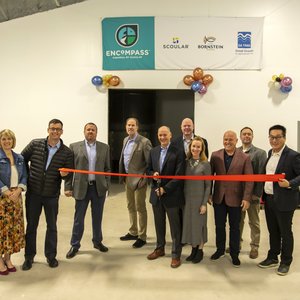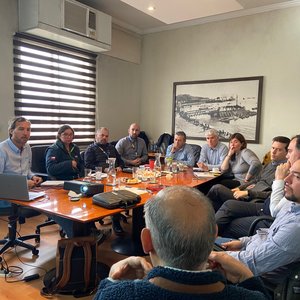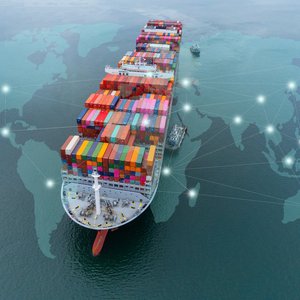The F3 — Future of Fish Feed announced today the three winners of the F3 Challenge - Carnivore Edition. U.S.-based Star Milling Co. won the salmonid category for its non-GMO plant-based feed that contains omega-3 DHA-rich algae and heart-healthy flax oil for rainbow trout.
We spoke with Paul Cramer, VP/general manager of the feed manufacturer Star Milling Co., and William Foss from McFarland Springs Trout farms and co-owner of TwoXSea, about the development of this diet and its future prospects.
AQ: Tell us about your company and its sustainability focus.
PC: Star Milling Co. is a 52-year-old, third generation animal and pet food manufacturer. We started producing commercial fish feed in the 1970s in pellets and then shifted to extruded diets in the mid to late 1980s. Our mission has always been to provide commercially viable nutrition solutions for animal agriculture. As a small company, we have strived to do our part, looking for alternative ingredients that are more sustainable. This competition is a good example of how we, as a small company, can look at processes such as fish-free alternatives, and even vegetarian diets, that a larger company generally won't look at in the incubation stage.
WF: We’ve been seeking a solution to the well-publicized problem of using forage fish in aquafeed. There is no reason to include these products aside from cost. In addition, it became painfully obvious that the other terrestrial proteins contained residues of products we don’t want to be included in the feed and bioaccumulated in the final product. As a result, we arrived at a plant-based diet to remove these contaminants.
AQ: What ingredients did your company use to replace fishmeal and fish oil? Was the feed manufacturing process affected by these new formulas?
PC: All diets were developed and tested through TwoXSea’s vision. These diets utilize natural components from algae sources and plant proteins to meet dietary requirements as well as supplemental amino acids, seed oils, vitamins and trace minerals. Because these diets require a high protein and oil content, they are very difficult to manufacture with tight constraints due to the unique ingredients used and their nutritional make-up.
AQ: Where were the ingredients sourced from? What are the main constraints in terms of ingredient supply?
PC: Most ingredients are sourced within the United States and we have been fortunate to have reliable sources provide us with the needed supply, but availability has been challenging at times.
WF: The main constraints have been testing, price and sourcing. For a while, the FDA made it very difficult to use fish oil replacements, which required us to petition for a variance from our local government.
AQ: What has been the fish performance achieved so far for the species targeted for the challenge?
PC: Producers reported the fish-free feeds were better than conventional diets of the same/similar nutrient values. Fish growth, rate of gain, and overall health were excellent based on feeding trials against similar nutrient-valued diets. Fish ate more aggressively with the F3 diet(s).
WF: Growth rates are better than conventional feed, making this the best feed for this species.
AQ: Do you plan to test or commercialize fish-free feeds for other aquaculture species?
PC: Possibly, but it would be utilizing terrestrial animal proteins and oils on a large scale instead of the “all vegetarian” diet we did for the F3 contest.
WF: We’ve tested it on other species, such as tilapia, sturgeon and striped bass. It works well and changes the fillet quality for the better.
AQ: Did you find any palatability issues? Have your formulas had an impact on the final fillet quality?
WF: We have no palatability issues and our fry use the feed from day one. The final fillet quality is far superior in smell, texture, appearance and taste. The feed itself has no off-flavor or bad smell, based on the quality of the ingredients. As a result, the fillet of this trout is exceptional – quality in, quality out. We have been selling trout in the SF Bay Area now for over ten years, and the top chefs are the best feedback for us. It is a much better product.
AQ: From your point of view, what is the main nutritional issue to increase fish/shrimp performance utilizing your formula?
PC: At this time, we have no issues. Over several years of trialing these feeds, we immediately addressed any health issues with nutritionist Dr. Rick Barrows and were able to correct them with simple diet adjustments.
AQ: Are these formulas cost-effective and competitive with standard feeds?
PC: No, not these diets as formulated since these formulas are strictly vegetarian. The diet(s) could be modified by utilizing terrestrial animal proteins and fats to bring the costs of the feed down to be more competitive with conventional trout diets. But then, the modified formula(s) may not have the same outstanding growth and health results for the fish. But with this being said, there are opportunities for alternative ingredients that may reduce costs in the future. As technology advances along with competition, many new opportunities arise and we are already seeing some cost savings starting to happen.
WF: It should be argued that finding the cheapest ingredients without regard to the environment or health of the consumer isn’t where we should be going. Conventional feeds contain mercury, PCBs, microplastics, growth hormones, antibiotics and a host of other contaminants that result in a far higher long-term cost in healthcare.
AQ: What is your production capacity of fish-free feed? Which ingredient(s) limits the production capacity in your area?
PC: We are currently investing in expanding our capacity overall. This will allow us to double our feed capacity in the future. Currently, with our current equipment, I could see an increase of 1,000-1,500 tons per year.
For the most part, ingredient availability is consistent regardless of region; it just becomes a factor in the cost of transportation. We are making significant investments in our current overall capacity to allow for more production capacity for these types of diets. Also, more production demand for these types of diets will also improve efficiency.
AQ: Who are your current farm partners?
PC: Desert Spring Trout aka Summer Lake Trout and TwoXSea.
AQ: What are the future expectations in terms of supply and markets for your fish-free feed?
PC: There have been interested companies in the current diet(s), but as of right now, it is cost prohibitive for most producers unless they are going after a specialized market for their fish. If we were to develop modified diets, utilizing terrestrial animal proteins and fats, this would bring the overall price down and be more appealing for other species producers to trial.
WF: It’s pretty clear that this is the only way forward, as the conventional approach is a dead end. We expect that this will become the solution for all feeds after traditional market forces, such as lobbying by large companies that have heavy investments in forage fish harvesting, have disappeared. It’s a transition, and it could inflict financial pain on stakeholders of traditional feed ingredient production. It’s an appropriate use of the term "Sea Change”, for once.












